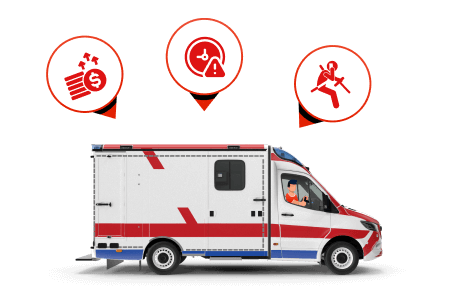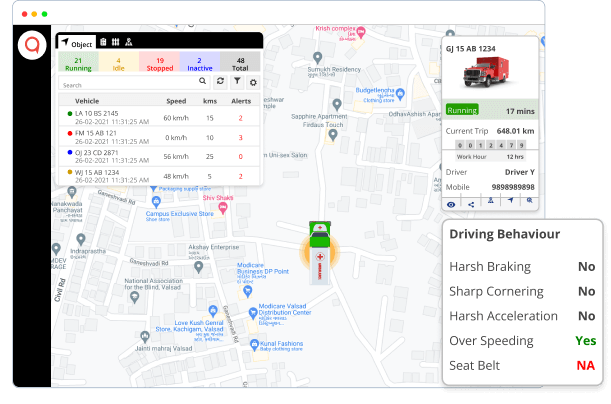A metropolitan area’s emergency services department, including fire and EMS (Emergency Medical Services), operates a fleet of emergency vehicles. They are responsible for rapid response to fires, medical emergencies, and various rescue missions. The department faces several challenges related to driver safety, response times, and fleet maintenance. To address these challenges, they implemented a driver behavior monitoring system.
Introduction
Challenges
Safety Concerns: The department lacks real-time insights into how drivers are operating emergency vehicles. It leads to concerns about potential unsafe driving practices during emergency responses.
Response Time Delays: Without route optimization and real-time tracking, there are often delays in reaching emergency incidents. This impacts the department’s ability to save lives and mitigate property damage.
High Maintenance Costs: Frequent vehicle breakdowns and high maintenance costs are a concern. They are incurred due to inadequate vehicle care, wear and tear from harsh driving habits, etc.
Challenges

Solution
The emergency services department implements a comprehensive driver behavior monitoring system with the following features:
Real-Time GPS Tracking: The system tracks the location of each emergency vehicle in real-time. It allows for precise monitoring and response coordination.
Speed Monitoring: Monitors vehicle speed, issuing immediate alerts for excessive speeding, which may occur during emergency responses.
Acceleration and Braking Analysis: Detects harsh acceleration and braking, helping to prevent accidents and minimize stress on the vehicles.
Idle Time Tracking: Monitors engine idling duration to reduce fuel consumption and minimize emissions.

Route Optimization: Utilizes real-time traffic data to provide optimized routes considering the type of emergency and traffic conditions.
Driver Feedback: Provides in-cab notifications to drivers, encouraging safer driving behaviors during emergency responses.

Results
Improved Safety: The implementation of driver behavior monitoring significantly reduced instances of unsafe driving practices. It lead to a decrease in accidents and near misses during emergency responses.
Faster Response Times: Optimized routes and real-time tracking lead to significantly faster response times. It improved the department’s ability to save lives and mitigate property damage.


